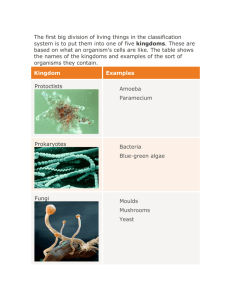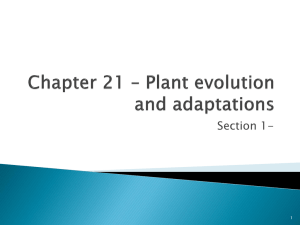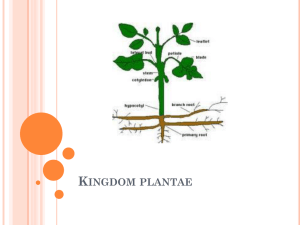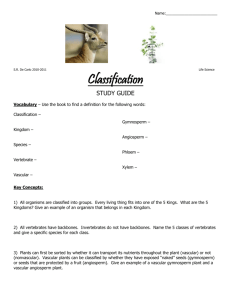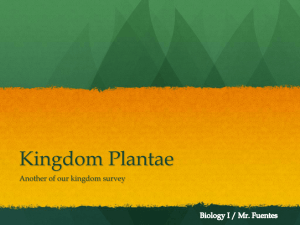Plants ppt
advertisement
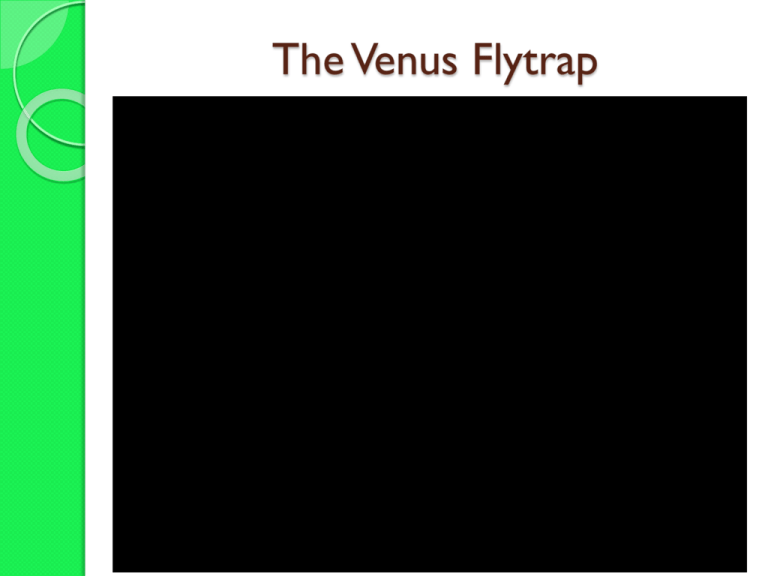
The Venus Flytrap The Kingdom Plantae Kingdom Plantae Recall: DOMAIN Eukarya KINGDOM Plantae EXAMPLE Maple Tree CELL TYPE Eukaryote NUMBER OF CELLS Multicellular CELL WALL MATERIAL Cellulose NUTRITION Autotrophs PRIMARY MEANS OF REPRODUCTION Sexual How Plants Evolved Algae Multicellular algae ("seaweed") are divided into 3 main groups (phyla) based on their colour: brown, red, or green. Algae are photosynthetic aquatic protists. The only other kingdom that contains multicellular photosynthetic members is the plant kingdom. Some scientists say that green algae are plants, while others consider them protists. However, scientists do agree that plants evolved from algae, and green algae are the evolutionary link between the two groups. Why is it believed that green algae are the closest evolutionary relatives of land plants? The earliest land plants were small, grew in moist places and transferred water and dissolved nutrients from cell to cell by osmosis and diffusion. To grow successfully on land, plants developed several adaptations including: the formation of an embryo, a reproductive structure that develops into a plant the ability to stand upright and grow tall to get as much sunlight as possible tissues to transport nutrients, waste, and water strategies to reduce water loss strategies to disperse reproductive structures without water currents (i.e. wind/via pollinator) 3 Key Characteristics of Plants 1. Eukaryotic 2. Cells have cell walls that contain cellulose 3. Carry out photosynthesis, using the pigment chlorophyll Evolutionary Age of Various Plants Fossil & biochemical evidence indicate that green algae are the oldest group of plants and flowering plants the youngest. The Kingdom Plantae: Vascular vs. Non-Vascular The suffix -phyte comes from the Greek work for "plant". Non-Vascular Plants have NO vascular tissue (no true roots, stems, and leaves). They must depend on the processes of diffusion and osmosis to transport nutrients Vascular Plants have vascular tissue to transport materials and nutrients throughout the plant and between its cells. ◦ E.g. Xylem and Phloem They have true roots, stems and leaves. Allows for plants to grow tall. Non-Vascular Plants (Bryophytes): 3 phyla - mosses, liverworts, and hornworts Grow very close to the ground in damp areas where they can obtain their water easily They hold water like a sponge Lack a rigid support Vascular Seedless Plants: 3 phyla - ferns, club mosses, and horsetails vascular tissue allows them to grow tall posses rigid support structures that allow them to stand tall and transport water upward The “Need” for “Seed” Seeds allow plants to reproduce sexually without needing water, and provide protection against harsh environmental conditions. Seeds are plant embryos packaged in a protective coat along with a food supply (cotyledon). Seeds can survive without water for many years. Vascular Seed Plants Gymnosperms: conifers (eg. pine, spruce, cedar trees) cone-bearing trees (coniferous trees) seeds are exposed on the surface of cones and not protected by an ovary ("naked seeds") Vascular Seed Plants Angiosperms: aka. flowering plants diverse types - non-coniferous trees (eg. oak, maple, birch), wheat, grasses, weeds, roses and trilliums. flowers functions as reproductive and seed dispersal structures "angiosperm" means "enclosed seed“ upon pollination, the ovary often develops into a fruit ◦ fruit - the ripened ovary of a flower Flowers - specialized structures for sexual reproduction Homework Read pages 90-104 #1-3 (p. 93), 7, 9, 12 (p.97), 13, 15 (p.101) #1, 5, 6, 10, 12 (p.104)
